the joys & perils of atmospheric firing: part I
ceramics sale, surfaces, wad-marks, soda-firing vs. wood-firing
Shop update: Tuesday March 4th, 10am PST. If you are a paid subscriber, you will receive an email link with a password to pre-view the store on 9am, Tuesday and get first access anything on there before it goes live to the public. Also still collecting ducks in a row for mail service, sent out some mail two weeks ago but I’m doing another round tomorrow for people who just recently gave me mailing info.
I’ve been digging in and firing and thinking and making and documenting and I am ready to share some things. I have a new makers mark! I’ve been slowly chipping away at my website www.summerorr.com. I want to sell some precious objects, to then buy some more clay and material to make more objects.
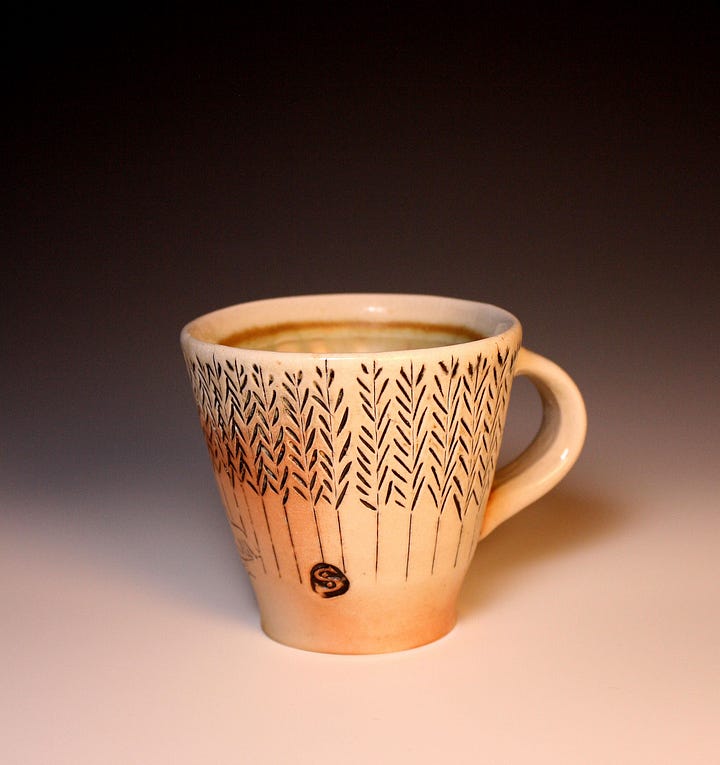
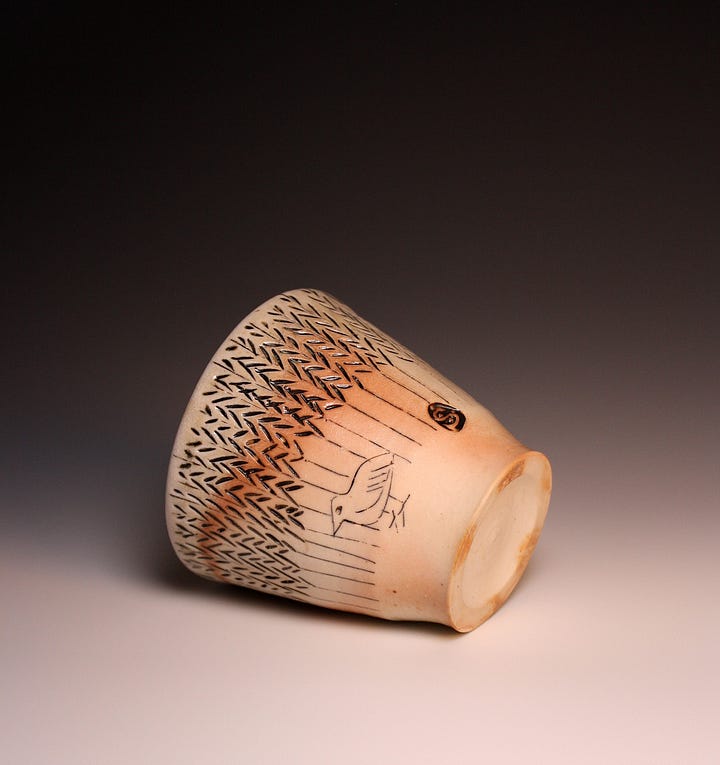
I’ve been at Cobb Mountain Art & Ecology Project for almost 5 months now. To better articulate what I’ve been working on and ruminating over, I think it’s important to explain that almost all of the work I have been making here has been either wood-fired or soda-fired, with a porcelain clay body (either nara, or glacia at the moment) and black underglaze inlaid into the forms. I use these terms with a lot of ease now, and I think it’s important to explain them, like if I was showing the work to my dad, I would describe it in layman’s terms— and if you already know, then it’s okay to skip this article.
For context, I was almost exclusively making electrically-fired ceramic work fired at 2200°F (or cone 6) for the past two years, because that is what I had access to. This heat-range is commonly called a mid-range temperature, and most people using electric kilns fire in this range. This is what my work looked like using electric kilns, which basically operate like an big oven. Large metal coils heat up to a certain temperature, and you can get a glaze/surface that is a specific color with little to no variation. There is no atmosphere made by the electrically created heat. You need wood or gas.
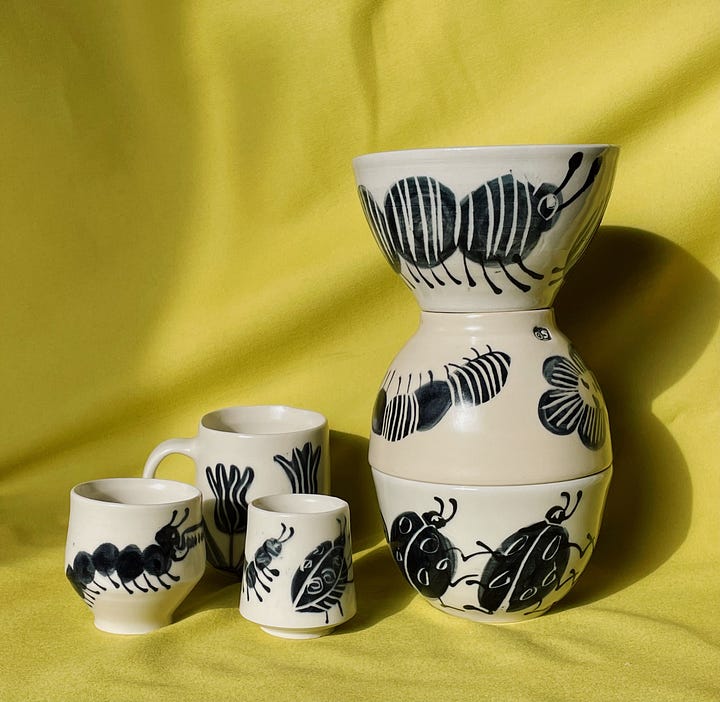
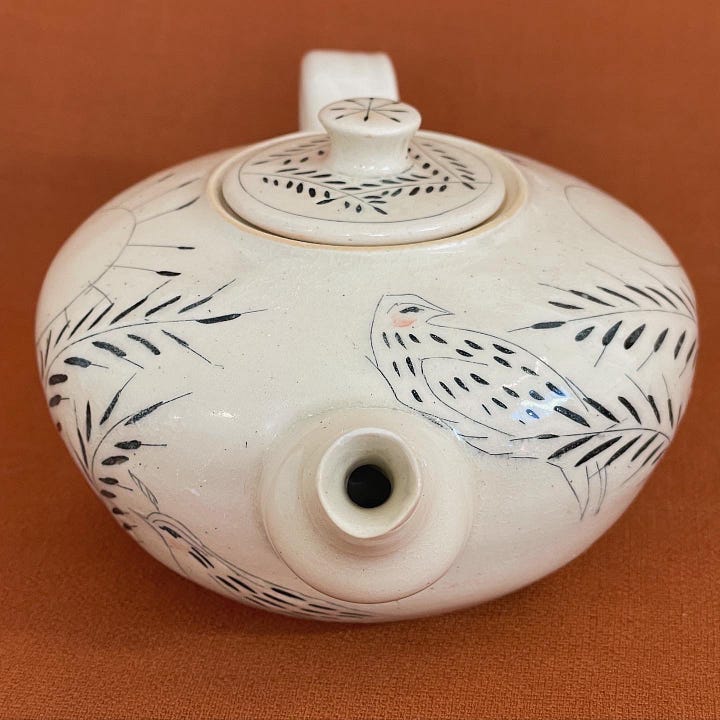
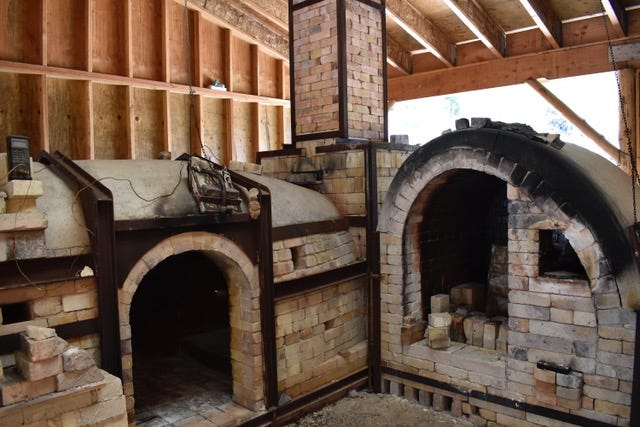
With wood-firing, a kiln is brought to a hotter temperature solely with fuel in the form of fire wood. This changes the entire process, and has a completely different history (going back centuries) than the electric kiln (relatively new kiln technology of the 20th century).
The train kiln (pictured above) at CMAEP is often stoked with wood every few minutes for 4 days, reaching around 2,381°F and held there. (imagine non-stop, overnight stoking, with an entire crew of people switching shifts and feeding each-other) Imagine where that fuel has to come from, and the effort it takes to cut, haul, and split it into usable pieces. The planning and coordination to bring the work together. The kinds of places you are even legally allowed to build kilns like this… That 181°F degree change in temperature between electric firing, and the source of fuel being wood, amongst other variables, makes a world of difference for the surface of the pottery.
I could wax poetics about wood-firing, and many people do, but what I really think the coolest thing about it is that it cannot be done alone. The very function necessitates a careful, involved, and communicative crew. And of course, you get really surprising, interesting surfaces where the wood has turned into ash, and melted to the body of the clay in high temperatures. Also FIRE1 and HISTORY2 and COLLECTIVE EFFORT. I love it!
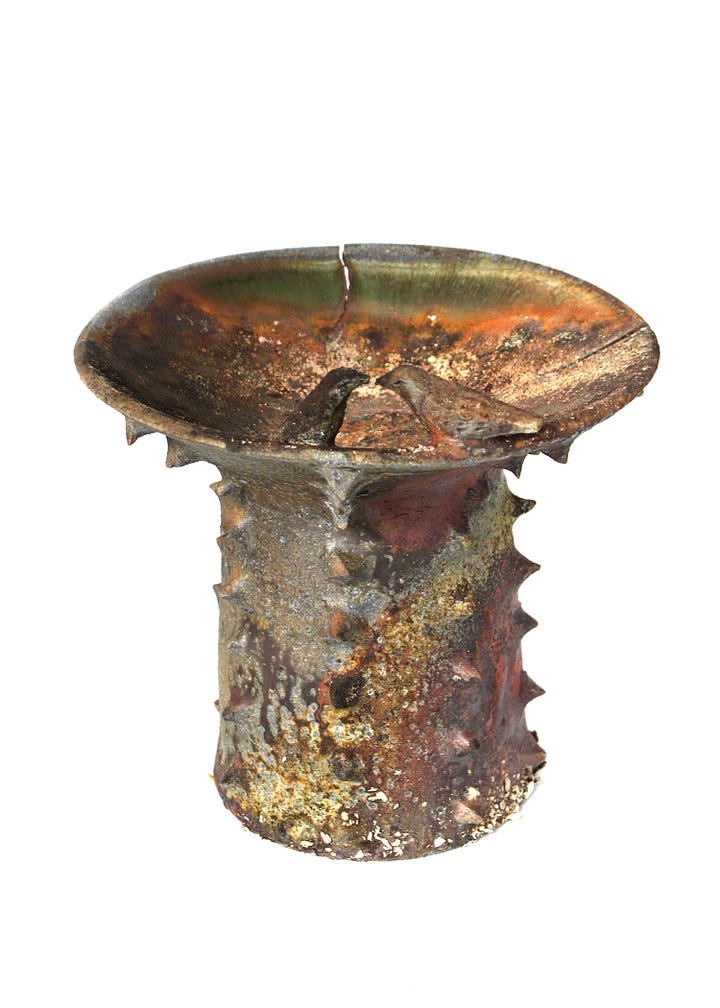
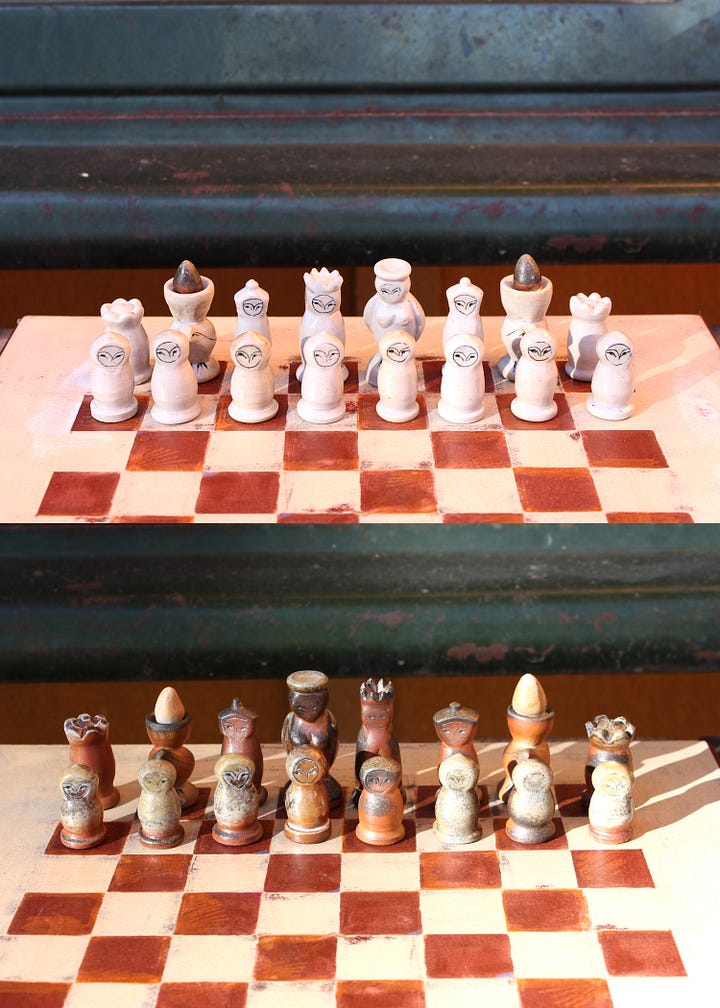
Soda-firing, which put simply is when a sodium carbonate solution is sprayed or tossed into a super red hot kiln, to achieve an often glassy, colorful, dynamic surface. This kiln can be heated by wood, or with gas, or with both. While sometimes similar to wood-firing in it’s surface effect, this process is relatively simpler and less-time consuming. It takes about 3.5/4 days from firing to cooling. You can do it alone (?). The kiln is a bit more approachable in size. (It only takes several hundred dollars of propane to fire, which is about $3.75 a gallon in this area. The wood-kilns can be up to $2,000 in wood cost alone) Luckily, we have Casey Beck on the CMAEP team who is a soda-firing wizard and I just witnessed him finish a book of kiln logs that maybe had like, I don’t know, 200+ firings from just the past couple of years. Casey has been leading the soda-firing workshops here and I’ve had the huge privilege to learn from and participate in them, which has felt radically WORLD EXPANDING.
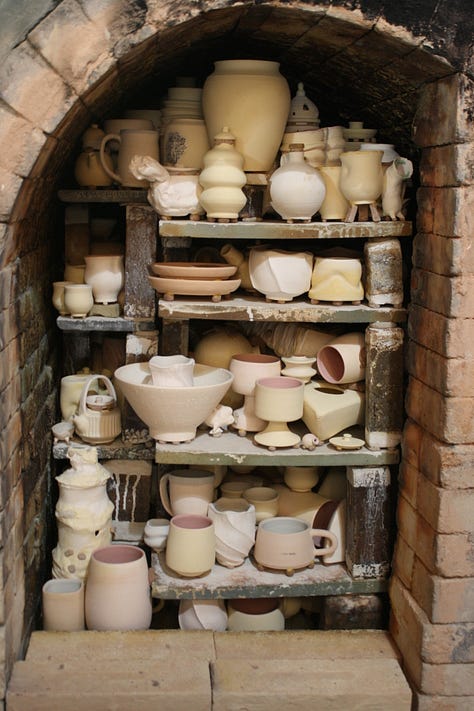
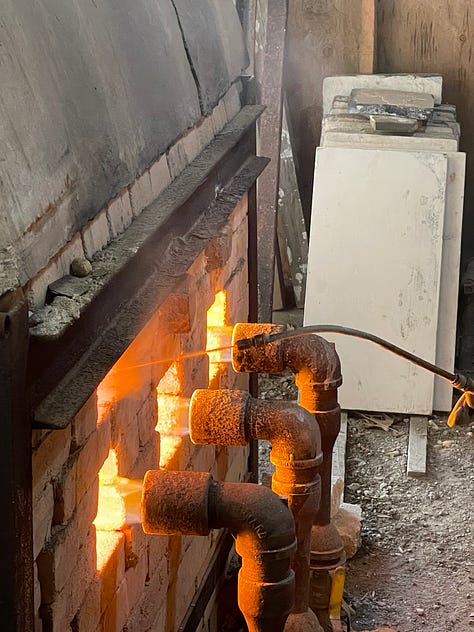
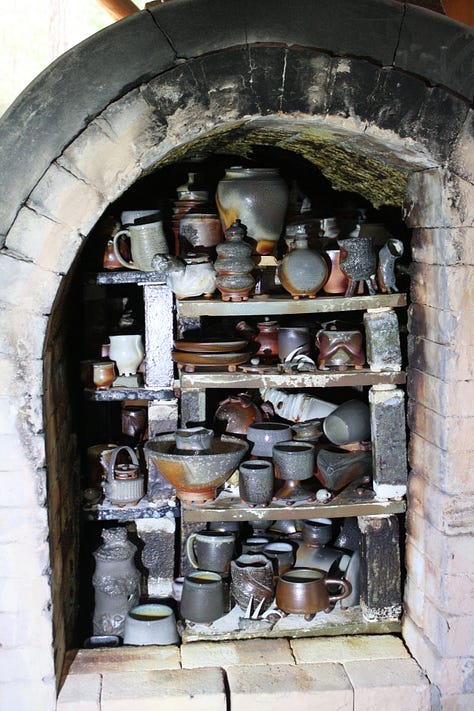
Here is a shitty diagram of the above cross draft kiln, showing the soda traveling through the kiln. It coats whatever clay it touches as it travels down and out. Keep in mind, most of the pottery in the pictures above is unglazed. What is giving the greys, greens, blues, is the added sodium carbonate.
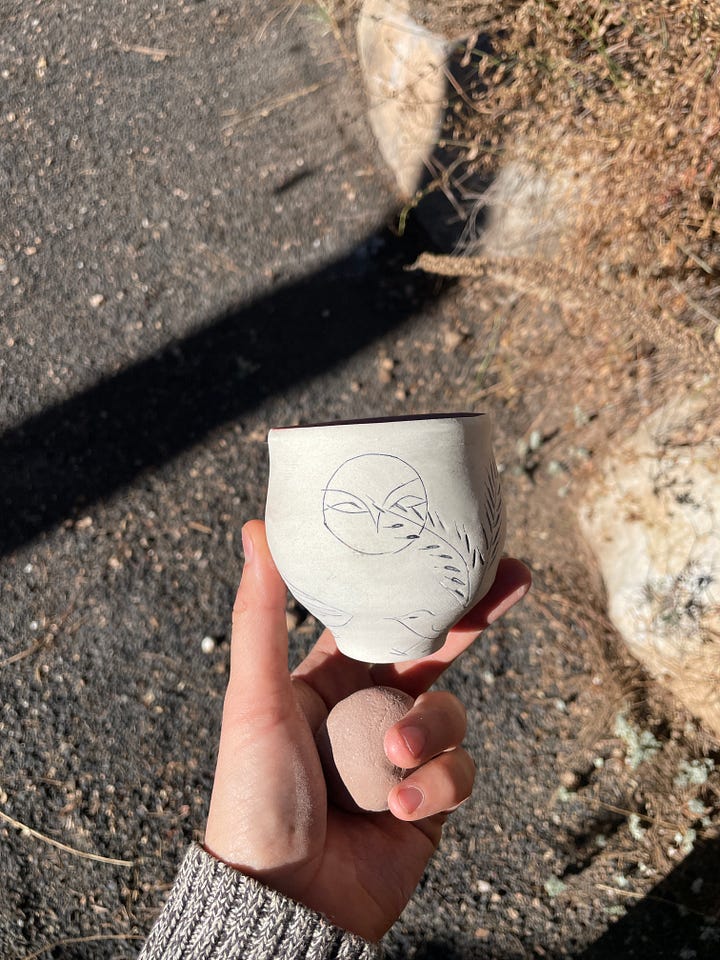
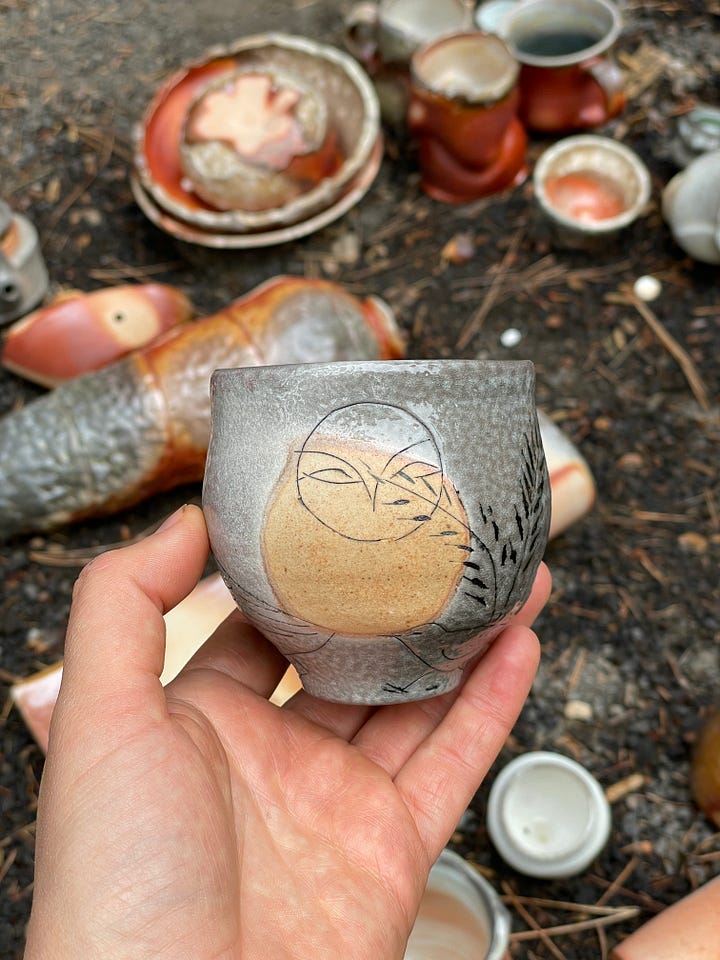
I am not an expert. I am distinctly just learning at this time. This diagram is probably wrong somehow and very over simplified, but I wanted to express the difference between wood-fired, and soda-fired in the context of the work I am showing and this is the best way I know to do it at this time. Above is a soda-fired cup that was juried into an exhibition at the Clay Studio of Missoula! This cup was placed on it’s side, on a little circular clay puck called a wad, that hid the surface from any soda adhering to it. You can see the wad-mark that remains, on the right, interacting with that moon owl face.
I’ve been playing around with my drawings and wad-marks in this new series of cups and things that will be available in my online store on Tuesday March 4th, 10am PST. I am really enjoying obscuring parts of the drawings, like the faces of the moons or the little birds, while other parts get entirely blasted away with crystals. The wads can be repeating, spiraling patterns, or negative spaces, or symmetrical pentagonal marks.
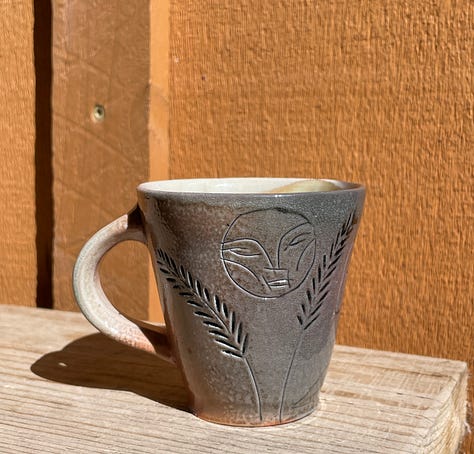

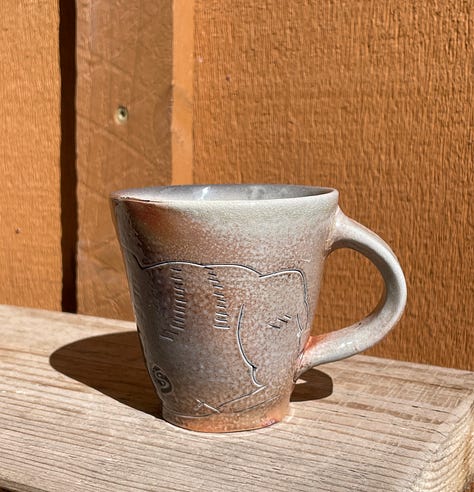
Some forms + drawings feel like night-time landscapes, especially when the clay body (glacia porcelain) that gets more carbon-trapping…. I have much more to say about access to this kind of kiln, about money and privilege and “wood-fired pottery” and labor and aesthetics and masculinity and being respected in these spaces, but for right now I am enjoying experimenting, drawing, writing and cultivating this relationship to clay and atmospheric firing in this small community on Cobb Mountain.
Hope you are finding small victories, thanks for reading.
°•⁀➷ Summer Ester Orr
Find my work in the upcoming exhibitions:
3.18 - 5.3 Formed by Fire at Alpha Fired Arts, Sacramento CA
5.3 - 6.14 MORNINGWARE: Breakfast & Brunch, Schuylerville, NY
4.26, 5-7PM All In: Group Show & Fundraiser at the Holland Project Reno, NV
All wood-firers must be pyromaniacs to some degree, I’m realizing.
“In the past, necessity was the basis for wood-firing, whereas today another necessity—that of personal choices related to aesthetic decision-making—usually prevails.”









